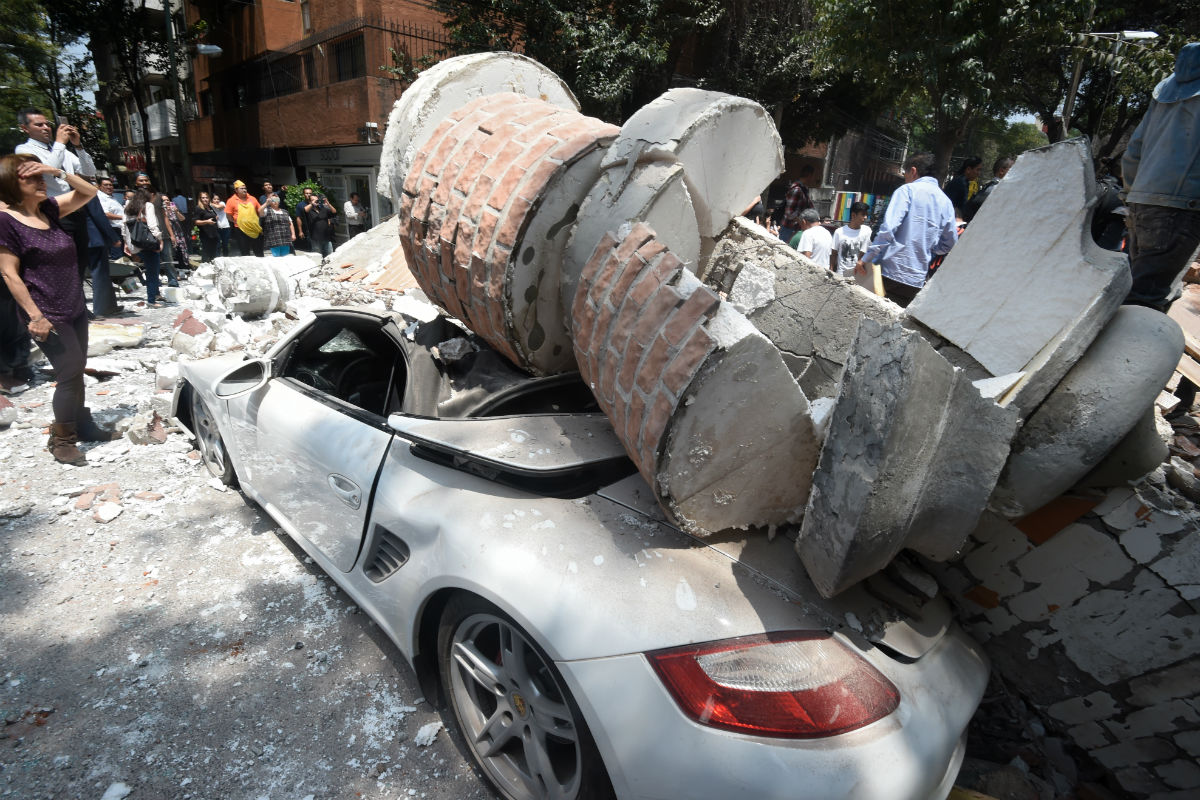
Mother Nature has been giving us some heavy hitters this year. From wind storms to heat waves, and hurricanes to earthquakes, disaster has struck across the globe.
With hurricanes, you can see the storm approaching from hundreds of miles away. With earthquakes, you have no warningbecause if we did we would warn citizens of impending danger, right?
It appears that is not a correct assumption. Mexico ranked number 33 of best countries has the US,ranked number 7 of best countries, beat in installing an effective earthquake early warning system.
Most recently, the earthquake in Mexico gives us pause. The tragic loss of many lives has come when the US is still in a recovery period from Hurricane Harvey and Irma.
Fortunately, Mexico was prepared for the earthquake. Their methods for the warning that saved lives is no secret and could be used to save countless more in the wake of a US earthquake.
It is called the Seismic Alert System (SAS) and is the product of an earthquake early warning system that was implemented in 1991.
It only took six yearsto have the SAS up and runningin Mexico after the devastating 8.0 earthquake in 1985, that killed around 30,000 people.
California is no stranger to earthquake tragedies. Dating as far back as 1857, earthquakes have been recorded to cause damage and take lives along the coast.
Napa Valley only recently, in 2014, had an earthquake that caused injuries and extensive damage.
If California would have implemented an SAS when they were first operational, they could have had decades of decreased risk to American lives.
With over 100 sensors spread along the Mexican coast, residents have up to a couple of minutes to seek safety before an earthquake hits.
The system performed flawlessly on September 7th, when an 8.1 magnitude earthquake entered Mexico, giving the residents approximately 90 seconds to seek safety before it struck.
Curbed reported:
“Mexico was rocked by an 8.1 earthquake last night, the country’s most powerful quake in 100 years. At least 32 people have been reported dead, a number that may rise in the coming days. But the impact of the disaster may have been substantially lessened thanks to Mexico’s effective early warning system—a life-saving tool that the equally quake-prone Western U.S. still hasn’t implemented.”
Residents are warned either through one of the 8,200 public speakers, or an app that can be downloaded onto a smartphone.
California has the means and technology to use a similar relay system but chooses to spend its funding on giving drug felons cash and fronting abortions.
The SAS has an intricate operating system that reads the seismic activity off the coast, then is calculated for land shock.
Engadget reported:
“The system detects earthquakes by sensing the initial, faster moving and less destructive P-waves generated by a seismic event which precede the stronger, more damaging S-waves. Once a sensor picks up a rumbling, it (and nearby sensors) transmit that data to a processing center which confirms the shaking is real and issues the alert. How much time people have to react depends on by how much the alert transmission beats the arrival of the S-wave. SInce digital transmissions are effectively instantaneous but seismic waves travel at a pokey 0.5 to 3 miles per second — essentially, the speed of sound through rock — seismologists can easily calculate its estimated time of arrival.”
Japan has already utilized this technology. US West Coast regions would fare well to do the same; especially California.
Gov Con reported:
“On September 20, the Federal Emergency Management Agency (FEMA) reported that earthquake losses in the United States add up to about $4.4 billion dollars annually.
According to the study, 84 percent of the nation’s annual losses are expected to occur in California, Oregon and Washington, with California alone accounting for $3.3 billion of the estimated damage costs.”
The severity of earthquake damage in the U.S. is a real concern. With those damages, lives are at stake.
The U.S. Geological Survey (USGS), along with collaborative partners, have finally begun working on an early warning system for the West Coast of the United States, called ShakeAlert.
Having an early warning system would have drastic implications on individuals seeking safety and protection of infrastructure.
ShakeAlert reported:
“Studies of earthquake early warning methods in California have shown that the warning time would range from a few seconds to a few tens of seconds, depending on the distance to the epicenter of the earthquake. For very large events like those expected on the San Andreas fault zone or the Cascadia subduction zone the warning time could be much longer because the affected area is much larger. ShakeAlert can give enough time to slow and stop trains and taxiing planes, to prevent cars from entering bridges and tunnels, to move away from dangerous machines or chemicals in work environments and to take cover under a desk, or to automatically shut down and isolate industrial systems. Taking such actions before shaking starts can reduce damage and casualties during an earthquake. It can also prevent cascading failures in the aftermath of an event. For example, isolating utilities before shaking starts can reduce the number of fire initiations.
After funding is secured, ShakeAlert hopes to begin some public notification mechanisms by 2018.
Scientists say an earthquake in California is inevitable. Looking ahead, and planning for a foreseen tragedy is wise.
All the devastation that Mexico is regrettably enduring currently can be a warning to the US, to utilize the technology we have.
Mexico was the first in the world to use an early warning system for earthquakes, it’s time we had our own.
Let us know in the comments if you have experienced an earthquake and how an early warning system would have benefited you.
